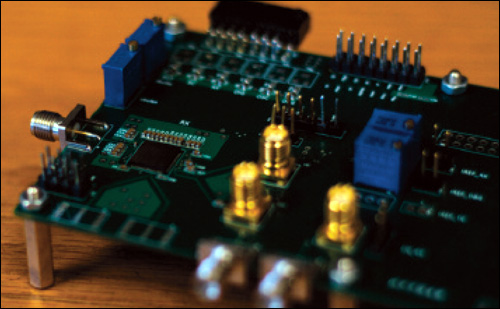Apr 27, 2016The National Aeronautics and Space Administration (NASA) RFID-tracks all inventory on the International Space Station. Efficiencies are crucial, because sending items up to the station is extremely expensive, and resources, including electricity, are precious. NASA was looking for an RFID system that could read tags simultaneously rather than sequentially, to reduce the time and battery life required to take inventory on the space station.
Jacobs Technology, a subcontractor for NASA's Johnson Space Center, was working on research with Texas State University's Ingram School of Engineering. In January 2015, senior engineering students Ramsey Doany, Cody Lovejoy and Kyle Jones were assigned a NASA-sponsored project to design an RFID system that could read multiple RFID tags simultaneously.
The students did not have any experience with RFID systems, but their advising professor, Harold Stern, is an expert in wireless communication systems and a regular attendee of RFID Journal LIVE! The team members intended to build an entirely new RFID reader but did not have access to the necessary tools, so they decided to modify existing hardware.
"The RFID companies we contacted would not grant us access to the privileged information required to modify the existing hardware," Doany says. "So we turned to simulation. After determining the modulation technique of the tags we were using, we built the entire system in Simulink, a graphical programming environment for modeling, simulating and analyzing multi-domain dynamic systems."
Once they had a simulated signal, they transmitted with an RFID reader antenna using an RF arbitrary waveform generator. They received the signal using the HackRF One tool, and demodulated and decoded it using MATLAB software.
The team considered frequency division multiplexing, an RF coding scheme in which numerous signals are combined for transmission on a single communications line, but quickly found the system's narrow bandwidth would limit the number of RFID tags that could be read. "The clear option was code division multiple access," Doany says.
A CDMA-based system would not be better in every application, but it was ideal to meet NASA's needs because it requires less power and works well in noisy environments. Passive ultrahigh-frequency readers use time division multiplexing, which requires sending signals at specific intervals.
"Since a standard passive UHF reader doesn't know how many tags it is going to read, once it signals for all the tags in the area to generate a response delay, it transmits a signal and waits for a tag to respond at each possible delay time slot, whether there is a tag at that slot or not," Doany says. "If the reader is transmitting without any response, this is a huge waste of information and power. Additionally, if there are collisions, this process may repeat several times. In a CDMA-based system, each beckoning transmission will yield information from the tags within range of the reader, even in the presence of high amounts of noise."
While the researchers test the simulation with larger numbers of tags and improve the design, they are looking for an RFID manufacturer to assist them in obtaining the necessary tools to alter the tags, so they can test CDMA-based RFID in the real world. "There have been discussions about future teams expanding this project to design a versatile RFID system that can switch between current and CDMA protocols, and even work as a tag-locating system," Doany says. "We hope to involve future senior design teams and/or graduate students on the expansion of this project."

